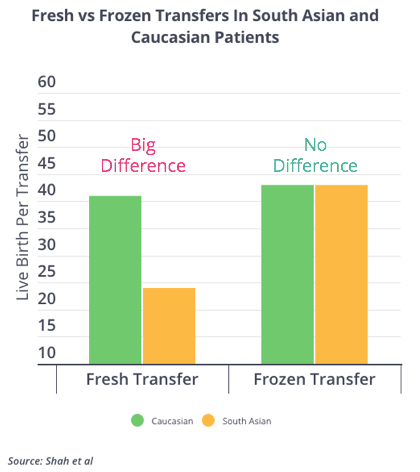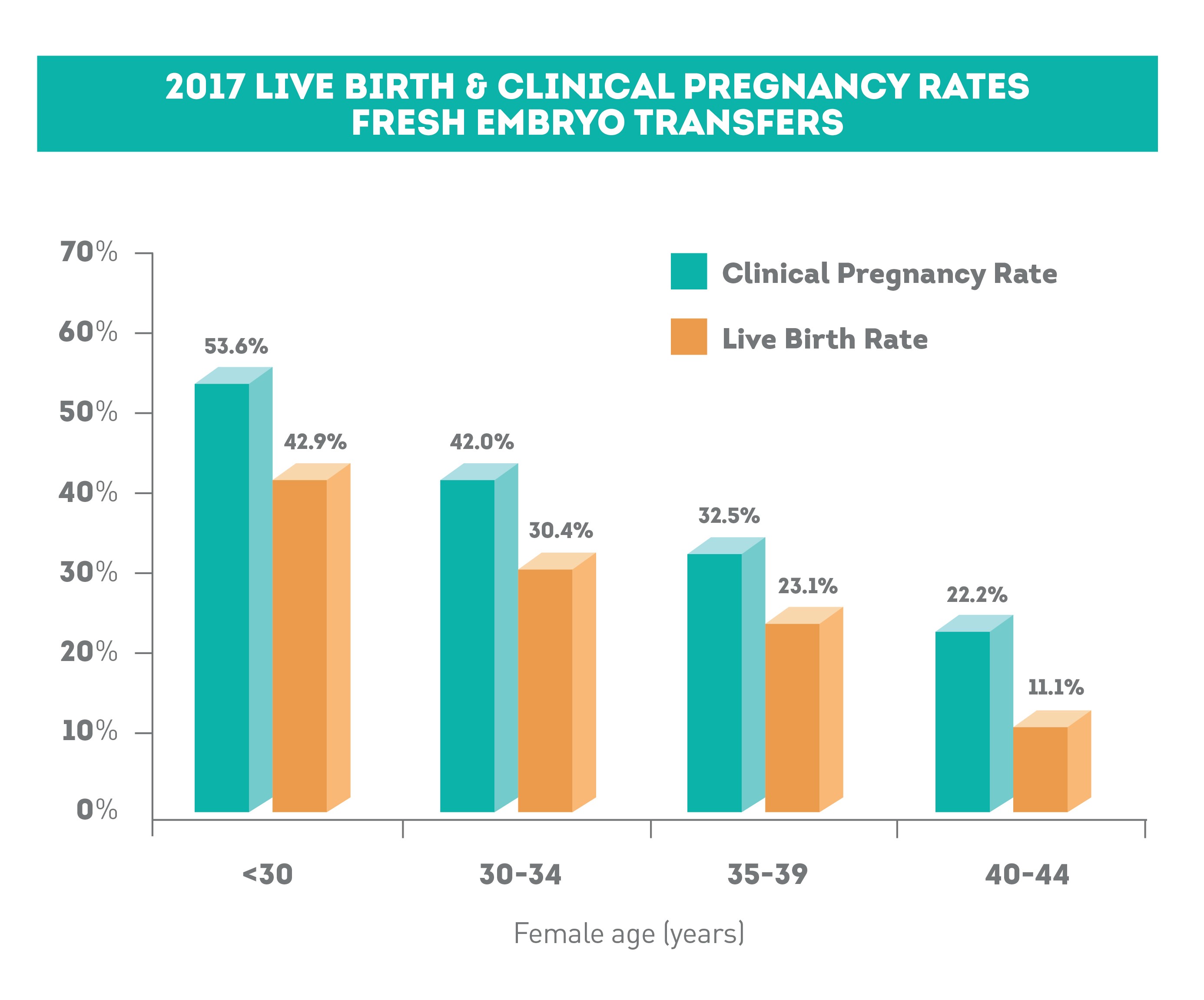The success rate following the replacement of frozen thawed embryos can be the same and if not higher than fresh embryos. In comparison the rate was just 291 per cent for women who had it on the seventh day according to the researchers at the Oxford Fertility clinic.
 Transferring Fresh Or Frozen Embryos Fertilityiq
Transferring Fresh Or Frozen Embryos Fertilityiq
Frozen Embryo Transfer Benefits Success Rates Risks and Costs FET does help in the IVF process and although there is a cost involved patients find this procedure very useful.

Frozen embryo transfer success rate. As you age frozen embryo transfer is less effective and women over the age of 40 can see success rates that are about 24. Frozen embryo survival rates are more than 90 if embryos are frozen by vitrification at the blastocyst stage 5-6 days after fertilisation. However freezing your embryos will.
Therefore we should not be afraid of using frozen embryos instead of fresh embryos because nowadays success rates in terms of pregnancies are pretty much the same. For various per transfer success rates. This means that fresh and frozen embryos offer relatively the same result.
Reasons why frozen embryo transfer success was lower in the past. Good graded euploid blastocyst transfer Lee CSS Low SY Lim YX Keith J Alpha Fertility Centre. However these percentages are very similar to fresh cycles.
Success rates depend on many factors including patients age and duration of infertility. The live birth rate per embryo transferred for the year ending 30th June 2015 as reported by the HFEA was. Our 2019 results for frozen embryo transfer cycles have not yet been validated by the HFEA but we like to keep you informed of our current success rates.
The HFEA give advice on success rates. Below is a look at our success rates for 5051 CCS frozen embryo transfers FET for women using their own eggs. The older research involved taking the less-than-ideal embryos freezing them and then immediately transferring the best-looking ones It would be logical that the less-than-ideal embryos would have lower success rates than the good-looking ones that were transferred in a fresh cycle.
Additional pregnancy care blood work ultrasounds and office visits while at Shady Grove Fertility are typically covered by insurance. Some embryos or possibly all embryos will not survive the freezing and thawing process if cells are damaged. Fees for medication may be applicable and usually range from 400-800The combination of reduced cost and equal.
60 of all the frozen embryo replacements had a single embryo replaced. However in some cases frozen embryo transfer increases the chances of success in multiple rounds of IVF. For some women FET success rates can actually be much higher than fresh embryo transfers.
World Class Success Rate 795 We also demonstrated that transfer of a single good graded euploid blastocyst produces pregnancy rates as high as 795. SART found that LBRs for frozen eggs were 465 percent for women under 35 386 percent for women 35-37 294 percent for women 38-40 and 259 percent for women 41 and older all significantly higher than fresh embryo transfers. Heres what research conducted in 2019 shows for fresh and frozen embryo transfer success rates.
Frozen embryo transfer success has improved dramatically over the last several years. Thanks to vitrification the technique that we nowadays use to freeze the embryos the survival rate of the embryos when you are working in a good lab and a good clinic is usually more than 95-98. LIVE BIRTH RATES Of 1709 chromosomally normal frozen embryo transfers among women under 35 years old 692 resulted in a live birth.
Higher quality embryos are associated with a 79 live birth rate with good quality at 64. The success rate of FET is high and has proved to be a method that is viable and effective. Research shows that frozen embryo transfers make up about 50 of the embryo transfers done in assisted reproductive centers.
In the past the chance for pregnancy using frozen embryos seemed to be lower than the transfer of fresh embryos. Poor quality embryos however are associated with a low birth rate of 28. The embryo is then placed in the patients uterus using ultrasound guidance.
The pregnancy success rate depends on a number of factors including the womans age. While commonly published IVF success rates can tell you the probability of success with each cycle or embryo transfer. More recent data however suggests that this is no longer true.
In 2019 125 frozen embryo transfer FET cycles using the patients own eggs resulted in an embryo transfer. For women with frozen embryos in storage hoping to have more than one child these tables will be particularly. Some clinics quote the chances of success per FET as high as 60 in women aged 35 or younger.
The table below shows how likely you are to have an ongoing pregnancy a clinical pregnancy. Frozen embryo transfer FET is a boon for couples who either cannot proceed with a fresh embryo transfer for medical reasons or want to have future attempts. A study published earlier this year by researchers at Stanford University found that in women over 35 with high progesterone levels frozen embryo transfers were 73 more likely to result in an ongoing pregnancy than a fresh transfer.
These numbers fail to tell you what you really want to know.
